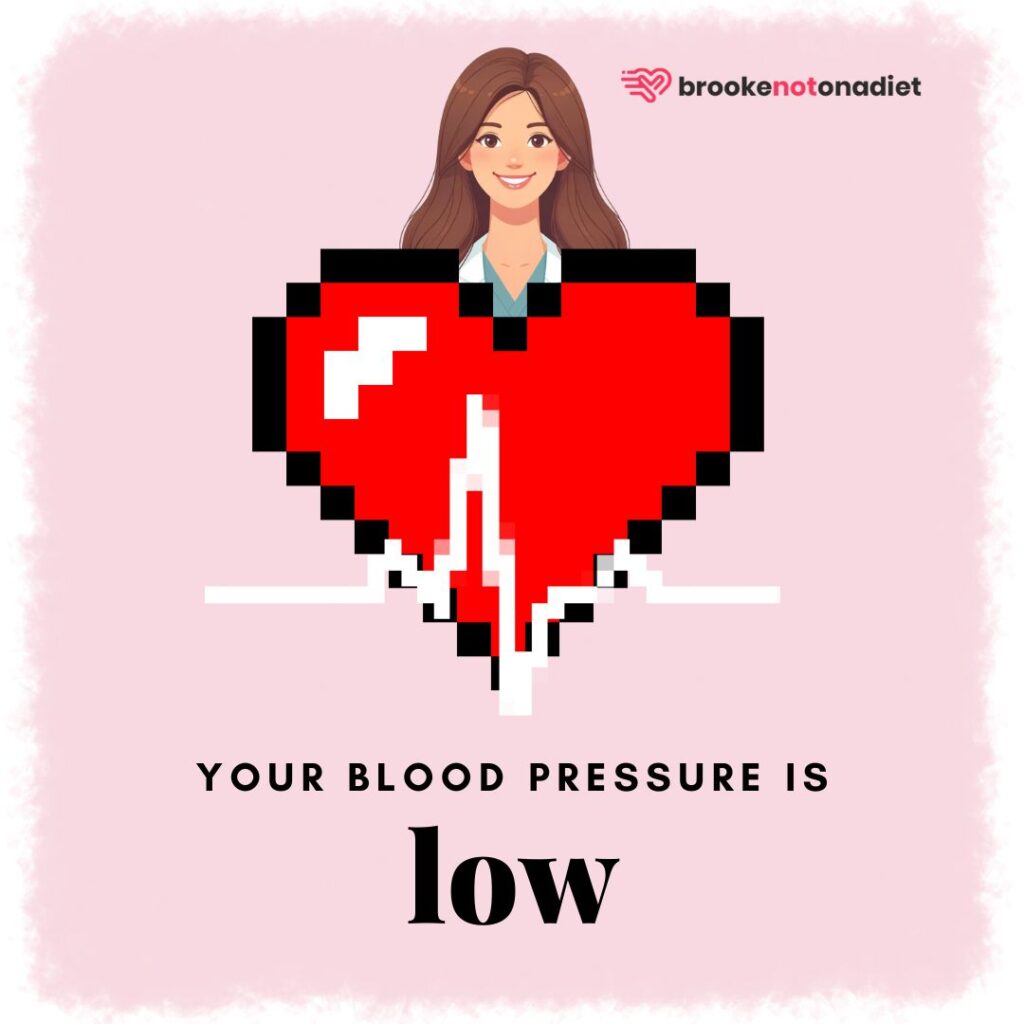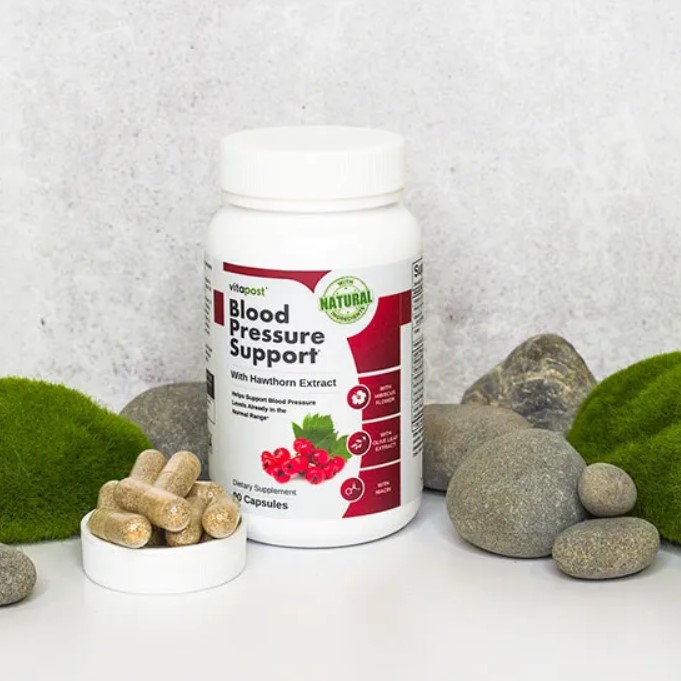
A blood pressure measurement of 86/61 mm Hg falls under the category of hypotension, indicating that it is below the normal range and potentially concerning.
Hypotension can cause various symptoms, including dizziness and fainting, which signal that vital organs might not be receiving enough blood to function properly.
The condition is considered a health risk as it may signify an underlying issue that prevents the heart, brain, and other organs from getting the necessary blood supply.
This insufficiency can lead to severe complications if not promptly addressed.
Immediate steps to manage hypotension include seeking medical advice to pinpoint its cause.
Treatment strategies may involve simple lifestyle adjustments such as increasing fluid and salt intake or more specific medical interventions depending on the root cause identified by a healthcare provider.
The American Heart Association (AHA) does not define specific ranges for hypotension but generally considers blood pressure readings lower than 90/60 mm Hg as indicative of low blood pressure.
Thus, a reading of 86/61 mm Hg suggests a need for evaluation and possibly treatment to mitigate symptoms and prevent potential health issues.
Factors leading to hypotension encompass a wide range, from dehydration and significant blood loss to severe infections and endocrine disorders.
Symptoms often include weakness, blurred vision, and nausea.
Diagnosing hypotension involves reviewing medical history, conducting physical examinations, and monitoring blood pressure readings.
Further diagnostic tests may be conducted to uncover any underlying conditions causing the low blood pressure.
What is the Mean Arterial Pressure (MAP) for a blood pressure of 86/61 mm Hg?
The Mean Arterial Pressure (MAP) for a blood pressure of 86/61 mm Hg is:
What is the Pulse Pressure (PP) for a blood pressure of 86/61 mm Hg?
The Pulse Pressure (PP) for a blood pressure of 86/61 mm Hg is:
How to manage blood pressure of 86/61 mm Hg?
1. Regular blood pressure monitoring
Monitoring your blood pressure at home is crucial for identifying any changes or patterns.
This process involves using a reliable blood pressure monitor to track your readings at consistent times, typically in the morning and evening.
Documenting these readings provides a valuable dataset that can help both you and your healthcare provider understand how various factors affect your blood pressure over time.
2. Increasing salt and water intake
For those managing hypotension, a moderate increase in salt and water intake can be beneficial.
This approach, guided by a healthcare professional, aims to raise blood volume and, consequently, blood pressure.
It’s important to approach this step carefully, as excessive salt intake can lead to other health issues.
3. Wearing compression stockings
Compression stockings are designed to support blood flow from the legs back to the heart, reducing the risk of blood pooling in the lower extremities.
This can be particularly helpful for individuals who experience significant drops in blood pressure upon standing, aiding in the prevention of orthostatic hypotension.
4. Eating small, frequent meals
Consuming smaller, more frequent meals rather than large ones can prevent significant drops in blood pressure after eating.
This strategy helps maintain a more stable blood pressure throughout the day, especially for those who experience postprandial hypotension.
5. Avoiding alcohol
Alcohol has the potential to lower blood pressure further, making it advisable for individuals with hypotension to limit or avoid alcohol consumption altogether.
This can help maintain steadier blood pressure levels.
6. Exercising regularly
Regular physical activity strengthens the heart and improves overall circulation, which can help increase blood pressure to healthier levels.
It’s essential to consult with a healthcare provider to create an exercise plan that is safe and suits your specific health situation.
7. Being mindful of body position
Changing positions slowly, especially when moving from lying down to standing, can help manage symptoms of orthostatic hypotension.
This mindful approach to movement can prevent sudden drops in blood pressure.
8. Managing stress
Stress management is an important part of controlling blood pressure.
Techniques such as meditation, deep breathing exercises, and engaging in hobbies or activities that you find relaxing can help mitigate the effects of stress on blood pressure.
9. Reviewing medications
Some medications can contribute to low blood pressure.
Discussing your current medications with your healthcare provider is important to ensure they are not negatively affecting your blood pressure.
Adjustments or changes to your medication regimen may be necessary.
10. Staying hydrated
Hydration plays a key role in maintaining blood pressure levels.
Drinking sufficient water throughout the day is essential, especially in warmer climates or when engaging in physical activity, to prevent dehydration and support healthy blood pressure.
11. Consulting with a healthcare professional
Working closely with a healthcare provider is critical for diagnosing and managing hypotension effectively.
They can help identify any underlying causes of low blood pressure and recommend appropriate treatment strategies.
12. Regular medical check-ups
Ongoing medical appointments allow for the monitoring of your condition and the adjustment of treatment plans as needed.
These check-ups are vital for addressing any new symptoms or concerns that may arise.
13. Educating yourself and adjusting as needed
Staying informed about your condition and any new treatment options is important.
Health guidelines and recommendations can change, so being open to adjusting your management strategies under the guidance of your healthcare provider is crucial for effectively managing hypotension.
Discover the Power of Natural Blood Pressure Support

Introducing our premium Blood Pressure Support supplement, expertly crafted to promote healthy blood pressure levels and cardiovascular wellbeing.
✅ Formulated with natural ingredients for gentle yet effective support
✅ Helps maintain optimal blood pressure levels
✅ Supports heart health and overall cardiovascular function
✅ May aid in reducing the risk of heart-related issues
✅ Manufactured in a GMP-certified facility for quality assurance
Take proactive steps towards a healthier heart with our Blood Pressure Support supplement.
What is a blood pressure chart and how to read it?
A blood pressure chart is a vital tool developed by the American Heart Association, providing a visual representation of various blood pressure ranges from normal to very high.
This chart is grounded in extensive research, including a 2018 study by Muntner et al., indicating that blood pressure benchmarks should reflect ambulatory and at-home variations.
The chart categorizes blood pressure into five stages: Normal, Elevated Blood Pressure (Pre-hypertension), High Blood Pressure (Hypertension Stage 1 and Stage 2), and Hypertensive Crisis, with specific systolic and diastolic mm Hg values assigned to each category.
To read the chart, you look at two numbers in a blood pressure reading: the systolic (upper number) and the diastolic (lower number) pressures, expressed in millimeters of mercury (mm Hg).
For example, a reading of 120/80 mm Hg means a systolic pressure of less than 120 mm Hg and a diastolic pressure of less than 80 mm Hg, which falls into the “Normal BP” category.
The systolic number measures the pressure in your arteries when your heart beats (contracts), indicating how hard your heart is working to pump blood.
The diastolic number measures the pressure in your arteries when your heart rests between beats, reflecting the resistance to blood flow in the blood vessels.
Both numbers are crucial for diagnosing hypertension and determining the risk of cardiovascular complications.
As per Dr. Paul K. Whelton’s insights and the studies mentioned, the chart serves not only as a diagnostic tool but also emphasizes the importance of awareness and management of heart health, urging a focus on non-pharmacological measures for those in the elevated and high blood pressure stages.
Why maintaining a healthy blood pressure is so important?
Maintaining a healthy blood pressure is crucial because high blood pressure, or hypertension, can lead to various serious health issues affecting different organs in your body. Here’s why it’s important to keep it in check.
- Heart attack (myocardial infarction): Persistent high blood pressure can lead to the narrowing and stiffening of arteries, a condition known as atherosclerosis, which increases the risk of a heart attack.
- Stroke (cerebrovascular accident): Elevated blood pressure can harm the blood vessels in the brain, increasing the likelihood of a stroke.
- Aneurysm: High blood pressure weakens the walls of blood vessels, raising the risk of aneurysm formation. A ruptured aneurysm can cause severe internal bleeding.
- Heart failure: Hypertension causes the heart to work harder to pump blood against increased resistance in arteries. Over time, this extra workload can lead to thickening of the heart muscle and reduced efficiency.
- Kidney problems: Chronic hypertension can damage blood vessels in the kidneys, impairing their ability to filter waste and excess fluid from the body.
- Eye problems (retinopathy): Hypertension can damage small blood vessels in the eyes, potentially leading to vision problems or even blindness.
- Metabolic syndrome: Hypertension often coexists with obesity, high blood sugar, and abnormal cholesterol levels, increasing the risk of metabolic syndrome.
- Changes with memory or understanding: Chronic hypertension may adversely affect the brain, increasing the risk of cognitive impairment, vascular dementia, or Alzheimer’s disease.
Best Blood Pressure Monitor

Monitor your blood pressure with ease and accuracy with our advanced Oxiline Pressure Monitor X Pro.
✅ High-precision readings for reliable monitoring
✅ User-friendly design for hassle-free use
✅ Large LCD display for clear readings
✅ Memory function to track your blood pressure history
✅ Portable and convenient for use at home or on-the-go
Stay on top of your health effortlessly with the Oxiline Pressure Monitor X Pro. Order yours now and take control of your wellbeing today!
